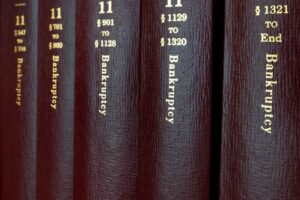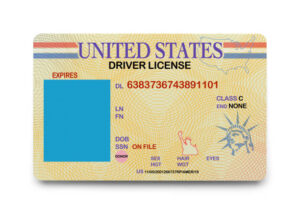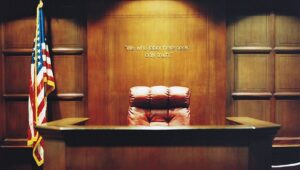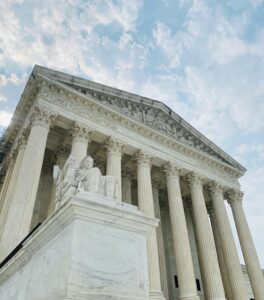
15 Wake Forest L. Rev. Online 1
Nicholas R. Rader
Introduction
Corporations may, as a result of their operations, incur substantial contingent liabilities that diminish their enterprise value. In some cases, these contingent liabilities take the form of mass tort judgments, which threaten to drag corporations into protracted, complex litigation in diverse forums with potentially varied results. To avoid this fate, companies have commonly sought creative ways to separate the liabilities from the company’s assets.
One recent method is known as the divisive merger (and more pejoratively, the Texas Two-Step), whereby the corporation employs Texas state law to unevenly divide its assets and liabilities between two new companies. The bad company (“BadCo”) receives all of the parent corporation’s mass tort liabilities, while the good company (“GoodCo”) agrees to pay all the mass tort obligations allocated to BadCo. BadCo then files for Chapter 11 bankruptcy, enabling global resolution of the mass tort liabilities while ensuring that GoodCo can continue its normal business operations. In these cases, the so-called divisive merger typically presents no business purpose “other than to separate the great majority of a solvent corporation’s assets from specified contingent liabilities.”
Chapter 11 bankruptcy describes the reorganization-focused chapter of the Bankruptcy Code, which allows a debtor to propose a plan of reorganization and imposes an automatic stay of all pending litigation against the debtor. Moreover, Chapter 11 proceedings allow large companies to resolve mass tort claims on a final and global basis. One specific provision in the Bankruptcy Code, 11 U.S.C. § 524(g), enables a particularly effective global resolution mechanism for debtors facing asbestos-related litigation. If the plan is confirmed, the court may then issue a channeling injunction to channel all present and future claims against the debtor to the trust. Ultimately, Texas Two-Step filings provide a legal procedure by which the debtor can manufacture financial distress and deal with asbestos-related mass tort liabilities without subjecting the asset-rich entity to the inconvenience of bankruptcy proceedings.
The Texas Two-Step Chapter 11 filings have come under increasing scrutiny as potential abuses of the Bankruptcy Code. Specifically, claimants have challenged whether BadCo should even have access to Chapter 11 bankruptcy; often, these challenges highlight the financial condition of the debtor as evidence of a “bad-faith filing.”
Bankruptcy courts retain some ability to control a debtor’s access to Chapter 11 through 11 U.S.C. § 1112(b). Pursuant to this provision, bankruptcy courts possess the power to gatekeep Chapter 11 bankruptcy by mandating that courts convert or dismiss some cases “for cause.” And courts have held that this explicit statutory standard “is sufficiently elastic and open-ended to subsume traditional and longstanding good-faith filing requisites.”
Thus, courts have universally interpreted this vague restriction to incorporate a good-faith filing requirement into Chapter 11 bankruptcy. But courts have diverged on how, exactly, to determine the existence of good faith on the part of the debtor. As a result, judicial interpretation of the good-faith filing requirement “is somewhat amorphous and differs among the circuits.”
For example, to prove a debtor’s bad-faith filing, the Fourth Circuit requires a showing of (1) subjective bad faith on the part of the debtor and (2) objective futility of the debtor’s restructuring efforts. This standard is generally considered the most debtor-friendly standard for proving a bad-faith filing. It is therefore no coincidence that almost all Texas Two-Step bankruptcy cases have been initially filed in the Fourth Circuit.
On the other hand, other circuits have adopted less debtor-friendly good-faith standards. In the Third Circuit, the focus is on “the totality of the facts and circumstances [to] determine where a petition falls along the spectrum ranging from the clearly acceptable to the patently abusive.” Thus, courts focus on two inquiries: “(1) whether the petition serves a valid bankruptcy purpose . . . and (2) whether the petition is filed merely to obtain a tactical litigation advantage.” Regarding the first inquiry, “a debtor who does not suffer from financial distress cannot demonstrate its Chapter 11 petition serves a valid bankruptcy purpose.” Therefore, the existence of financial distress for the debtor serves as the Third Circuit’s “good faith” litmus test.
Ultimately, the Third Circuit’s financial distress requirement provides a workable standard to preserve the intended purpose of the Bankruptcy Code. And more importantly, such a standard serves to resituate the federal bankruptcy system within its prescribed constitutional limits—to facilitate the fresh start of the insolvent debtor.
This Comment has six parts. Part I explores the original meaning of the Constitution’s Bankruptcy Clause, the evolution of federal bankruptcy laws, and the relationship between bankruptcy and insolvency. Part II outlines the challenges the federal courts have confronted in determining the outer limits of Congress’s power to enact bankruptcy legislation. Part III broadly discusses good-faith challenges to a debtor’s use of Chapter 11 bankruptcy. Part IV focuses specifically on the peculiarities of the good-faith filing standard in the Fourth Circuit. Part V analyzes the issues and arguments raised in recent Texas Two-Step cases. Finally, Part VI suggests the Third Circuit’s financial distress standard as a workable constitutional limitation on Chapter 11 eligibility.
I. Background and Early Development of Federal Bankruptcy Law
The Constitution gives Congress the express power “[t]o establish . . . uniform Laws on the subject of Bankruptcies throughout the United States.” But such a general formulation of Congress’s power under the Bankruptcy Clause provides little illumination on that power without an understanding of both the context in which the clause was written and the evolution of its interpretation since the Constitution’s ratification.
A. The Original Meaning of “Laws on the Subject of Bankruptcies”
One difficulty in understanding the Framers’ intent emerges from the clause’s apparently straightforward adoption, which occurred “with little debate.” As a result, little direct evidence exists to demonstrate what comprised “laws on the subject of Bankruptcies” from the Framers’ perspective. In The Federalist Papers, James Madison focused on the importance of establishing a uniform federal bankruptcy law due to the intimate connection between bankruptcy proceedings and the regulation of interstate commerce. The purpose, from Madison’s perspective, was to prevent individuals engaged in commerce—and thus, those most likely to have their persons and property scattered across various states—from taking “advantage of frictions between different states’ legal systems.” But beyond this brief explanation offered by Madison, the most notable feature surrounding the adoption of the Bankruptcy Clause is the lack of contemporary discussion and apparent nonchalance with which the Framers viewed the federal bankruptcy power.
In the age of American independence, English bankruptcy law represented a collective proceeding brought against merchant debtors involuntarily by aggrieved creditors. Technically, the legal term of “bankruptcy” specifically described an alternative method of dealing with defaulting merchant debtors beyond the remedy of debtor’s prison. And although the phrase “bankrupt” was nearly interchangeable with “insolvent” in common usage, English bankruptcy laws were distinct from English insolvency laws.
Frustratingly, scholars are split on whether the Framers intended to limit the clause’s “laws on the subject of Bankruptcies” to their English analogues. On the one hand, even the English statutes themselves failed to maintain a clear line between bankruptcy and insolvency, describing a solvent person as one who “had not become Bankrupt[ ].” But on the other hand, the use of the technical—and somewhat awkward—phrasing in the Bankruptcy Clause might suggest an attempt to delineate its legal subject matter from bankruptcy’s colloquial meaning, which was generally synonymous with “insolvency.” Possibly, the Constitution’s Framers chose the technical term “bankruptcies” instead of “insolvencies” to leave the regulation of most debtor-creditor relations up to the states.
B. Abolishing the Insolvency-Bankruptcy Distinction
Congress’s first attempt at passing a uniform federal bankruptcy law (the short-lived Bankruptcy Act of 1800) provides some support for the more technical contemporary understanding of the term “bankruptcies.” Specifically, the 1800 Act took for granted the notion that bankruptcy laws only applied to merchant debtors. But the Act also proved so unpopular that it was quickly repealed by Congress in 1803, even though it was drafted to expire on its own in 1805. Regardless, the 1800 Act’s strict formulation of bankruptcy law seems to have completely eroded by 1819, when the Supreme Court first addressed the powers granted to Congress by the Bankruptcy Clause in Sturges v. Crowninshield.
In Sturges, less than three decades after the adoption of the Constitution, the Court roundly rejected the limited, legalistic view of bankruptcy law as a creditor-initiated proceeding against merchant debtors. Instead, the Court adopted a capacious view of bankruptcy law that clearly included insolvency law, noting that “the line of partition between [bankruptcy laws and insolvency laws] is not so distinctly marked as to enable any person to say, with positive precision, what belongs exclusively to one, and not the other class of laws.” Going even further, the Court lamented that the “difficulty of discriminating” between the two “would lead to the opinion that a bankrupt law may contain those regulations which are generally found in insolvent laws; and that an insolvent law may contain those which are common to a bankrupt law.”
The Court in Sturges considered it unworkable, given the arbitrary line between insolvent and bankrupt laws, to give one subject exclusively to Congress and the other exclusively to the state legislatures. Therefore, the Court determined that the Constitution must grant Congress “extensive discretion” to delimit the scope of the bankruptcy power.
Despite the failure of the first Act, Congress again tried to create a national bankruptcy system with the Bankruptcy Act of 1841. The 1841 Act introduced debtor-initiated proceedings for all debtors in addition to the previously provided creditor-initiated proceedings against merchants. This expansion faced immediate challenges in the district courts, and at least one court declared that Congress overstepped its constitutional grant by expanding bankruptcy proceedings beyond English laws. But Justice John Catron, riding circuit, reversed that decision on appeal after noting that the American experience with insolvency legislation fundamentally differed from its English antecedents. Accordingly, Justice Catron held that the limits of the Bankruptcy Clause’s jurisdiction extended “to all cases where the law causes to be distributed the property of a debtor among his creditors.” This decision effectively discharged any remaining doubt on whether bankruptcy laws could encompass insolvency laws.
C. Morality, Bankruptcy, and Insolvency
Perhaps one explanation for the expansion of bankruptcy eligibility under the Bankruptcy Act of 1841 was the country’s shifting moral attitude toward bankruptcy. As the Supreme Court would later recognize, the Bankruptcy Act of 1841 and all later acts involving the subject of bankruptcies “proceeded upon the assumption that [the debtor] might be honest but unfortunate.” This rather generous assumption stood in stark contrast to prevailing attitudes during the colonial era, in which one unnamed but representative colonial Massachusetts satirist had lumped “bankrupts” together with “paper-money gentry,” “land-jobbers,” “state-leeches,” “idlers,” and English royalist sympathizers. And with the development of the early American capitalist economy, insolvency itself had evolved from a source of moral opprobrium into a calculated risk undertaken by the industrious entrepreneur.
The Bankruptcy Act of 1867 finally abolished the merchant-nonmerchant distinction, allowed both debtor-initiated proceedings and debt discharges without creditor approval, and introduced bankruptcy proceedings for corporations. Yet despite its clear departures from earlier American bankruptcy legislation, the 1867 Act—like its predecessors—retained an explicit insolvency requirement for determining a debtor’s eligibility to enter bankruptcy. Moreover, this insolvency requirement applied to both voluntary and involuntary proceedings.
The Bankruptcy Act of 1867—enacted in the aftermath of the Civil War and the passage of the Thirteenth Amendment—likely also represents the culmination of the shifting popular and legal attitudes toward debtor-creditor relations.
A brief summary of the relation between the Thirteenth Amendment and the bankruptcy system’s purpose of providing a “fresh start” is worth noting. First, the Thirteenth Amendment effectively introduced the rights of insolvent persons into federal constitutional law. And second, the Thirteenth Amendment gave Congress the “power to enforce this article by appropriate legislation.” Therefore, through the comparison of the “slavery of debt” to chattel slavery, the 1867 Act’s supporters directly tied the bankruptcy power to Congress’s power to legislate against involuntary servitude under the Thirteenth Amendment. After 1867, then, the line between bankruptcy and insolvency laws was no longer blurred; rather, the two were inextricably merged by the need to provide the debtor an opportunity for a fresh start and avoid the injustice of debt bondage.
II. The Advent of the Modern Bankruptcy System
Generally, beginning with the Bankruptcy Act of 1898 and persisting through the current era, two core tenets regarding the bankruptcy powers have emerged from the federal judiciary. First, while these powers certainly extend beyond the understanding of bankruptcy law in either England or the American colonies, they are not unlimited. Second, an underlying assumption determining a debtor’s eligibility to initiate a voluntary bankruptcy has long been the debtor’s inability to pay his or her debts.
A. The Supreme Court, the Bankruptcy Clause, and the Search for Constitutional Limits
The Bankruptcy Act of 1898 officially ushered in the modern era of permanent federal bankruptcy legislation. Primarily, the 1898 Act extended the availability of debtor-initiated bankruptcy proceedings and limited the grounds for denial of discharge. And according to the Court, the purpose of the Act was “to relieve the honest debtor from the weight of oppressive indebtedness, and permit him to start afresh free from the obligations and responsibilities consequent upon business misfortunes.” However, the Act faced constitutional challenges because it allowed persons other than traders to access bankruptcy, permitted voluntary petitions, and recognized state law exemptions.
The Supreme Court addressed each of these concerns in Hanover National Bank v. Moyses, which upheld the constitutionality of the 1898 Act while also articulating the scope of Congress’s bankruptcy powers. First, the Court reaffirmed the merging of bankruptcy and insolvency laws, quoting no less than Justice Joseph Story’s famous Commentaries on the Constitution to note that “[n]o distinction was ever practically, or even theoretically, attempted to be made between bankruptcies and insolvencies” in colonial and state legislation. Again quoting Justice Story, the Court also recognized that a historical review of such legislation would show that “a bankrupt law may contain those regulations which are generally found in insolvent laws, and that an insolvent law may contain those which are common to bankrupt laws.” Finally, the Court reiterated the presumption of the honest debtor, who “may be, in fact, fraudulent, and able and unwilling to pay his debts; but the law takes him at his word.”
Just over thirty years later, and relying once again on Justice Story, the Court in Continental Illinois National Bank & Trust Co. v. Chicago, Rock Island & Pacific Railway Co. noted that the terms “insolvency” and “bankruptcy” are convertible within the meaning of the Bankruptcy Clause. But despite acknowledging that Congress’s power “is not to be limited by the English or Colonial law in force when the Constitution was adopted,” the Court refuted the idea that the power is unlimited. Rather, “the nature of this power and the extent of it can best be fixed by the gradual process of historical and judicial ‘inclusion and exclusion.’’’
B. New Deal, Same Principles
In the aftermath of New Deal era amendments to the Bankruptcy Act of 1898, the Fourth Circuit also undertook to delineate the scope of congressional powers under the Bankruptcy Clause. For example, in Bradford v. Fahey, the Fourth Circuit echoed the Court in Hanover, acknowledging that Congress’s power was not limited by English and colonial laws “as they existed at the time of the adoption of the Constitution.” Rather, “the constitutional grant vests in Congress full power to deal with the relationship existing between debtors unable or unwilling to pay their debts and their creditors.”
But the Fourth Circuit in Bradford did articulate one potential limitation when determining a debtor’s bankruptcy eligibility. The court, while considering the constitutionality of the 1934 Act amendment’s corporate reorganization provision, stated that “[s]omething was needed which would enable insolvent corporations and farmers to obtain relief from their debt burdens without forcing a sale of their property.” Thus, from the very introduction of reorganization provisions into federal bankruptcy law, the Fourth Circuit contemplated one critical purpose to delineate eligibility under the Act—that its provisions were intended for insolvent corporations as a means to continue operation.
The Fourth Circuit struck a similar note in Campbell v. Alleghany Corp., which considered an appeal from a confirmation order of a plan of reorganization for a debtor corporation. The court entertained “no doubt as to the constitutionality of the statute,” again reaffirming that the bankruptcy power of Congress was “not limited to the forms in which that power has heretofore been exercised by Congress or by the laws relating to bankruptcy” existing in England or the colonies prior to the Constitution’s adoption.
However, the Fourth Circuit noted that in both voluntary and involuntary bankruptcy proceedings, such proceedings “are necessarily predicated on insolvency or existing inability to pay the debts in full.” And while the corporation “need not be insolvent in the sense that its liabilities exceed its assets,” it must at least be insolvent “in the sense that it is unable to pay its debts as they mature.” Once again, the court simultaneously embraced an expansive view of bankruptcy powers while declining to abrogate the requirement of insolvency on the part of the debtor—particularly when the debtor filed a voluntary petition seeking corporate reorganization.
C. Gradual Process or Unfettered Expansion? Still Searching for a Limit
As explained above, the judiciary has clearly and repeatedly affirmed that Congress’s power via the Bankruptcy Clause is not beholden to the narrow legal conception of bankruptcy at the time of the Framers. But the courts have also held that such power cannot be unlimited. Instead, its limits are best determined by the gradual process of “inclusion and exclusion.” Yet despite the continuous existence of a federal bankruptcy system since 1898, no clear constitutional limit has yet been posited that would circumscribe Congress’s ability to adjust debtor-creditor relations under the Bankruptcy Clause.
The only instances in which the Court has struck down a federal law for exceeding the Bankruptcy Clause’s constitutional limitations involved a lack of uniformity, not a dispute over the meaning of “the subject of Bankruptcies.” In Railway Labor Executives’ Ass’n v. Gibbons, the Court simply took issue with the fact that the Rock Island Transition and Employee Assistance Act granted preferential treatment to the Rock Island Railroad, essentially providing employee protection provisions to only one regional bankrupt railroad.
Similarly, in Siegel v. Fitzgerald, the Court held that Congress had unconstitutionally increased the fee rates for debtors in large Chapter 11 cases by not applying the temporary increase uniformly. Congress initially exempted the six judicial districts in Alabama and North Carolina from the increase because the districts had declined to join the United States Trustee Program. Moreover, even once this exemption ended, the increase in the six districts only applied to new cases—rather than also applying to all pending cases, as it did in all other districts. The Court concluded that the Bankruptcy Clause “does not permit Congress to treat identical debtors differently” by “arbitrarily dividing States into two categories.”
On the other end of the spectrum, in Central Virginia Community College v. Katz, the Court held that the Bankruptcy Clause gave Congress the authority to abrogate states’ sovereign immunity. But in his dissent, Justice Thomas contended that Congress had finally exceeded the scope of “the subject of Bankruptcies.” Specifically, Justice Thomas questioned the Framers’ “fervor” to enact a federal bankruptcy regime given the delay between the Constitution’s ratification and the adoption of the first permanent national bankruptcy law in 1898.
According to Justice Thomas, the Framers could not have reasonably intended to provide Congress with such extensive power through a clause adopted with little debate and whose authority “[f]or over a century . . . remained largely unexercised.” As he noted, “states were free to act in bankruptcy matters for all but 16 of the first 109 years after the Constitution was ratified.” And prior to 1898, Congress only passed bankruptcy laws in response to major financial disasters. Taken altogether, such historical evidence hardly supports the contention “that the Framers placed paramount importance on the enactment of a nationally uniform bankruptcy law”—and thus it would seem reasonable to more closely scrutinize the powers which now emanate from the Bankruptcy Clause.
Yet against this backdrop of ever-expanding power, only rarely met with judicial restraint, the Supreme Court has not wavered in recognizing the close relationship between bankruptcy and insolvency. Indeed, as recently as 2023, the Court stated that “[t]he Bankruptcy Code strikes a balance between the interests of insolvent debtors and their creditors.” Thus, the historical overview of bankruptcy legislation and case law relates two fundamental principles: (1) the powers granted by the Bankruptcy Clause, while expansive, cannot be unlimited; and (2) bankruptcy and insolvency, despite their legal distinction at the time of the Framers, continue to be linked by both courts and Congress.
III. Good Faith and Chapter 11
Good-faith challenges regarding the use of Chapter 11 bankruptcy have certainly intensified in light of the Texas Two-Step phenomenon; however, the challenges predate these divisional mergers. When viewed most broadly, the cases coalesce around the extent of the powers granted under the Bankruptcy Clause. And specifically, they often force courts to grapple with whether solvent debtors may take advantage of bankruptcy proceedings. Yet not all such cases examining the debtor’s good faith invoke the § 1112(b) good-faith filing requirement.
For example, in In re Marshall, the United States District Court for the Central District of California dealt with a case in which a successor trustee moved to dismiss the debtor’s confirmed Chapter 11 plan by questioning the constitutionality of allowing “clearly, and overwhelmingly, solvent debtors to discharge their debts.” Unlike the implicit good-faith filing standard for petitions under § 1112(b), the Code does impose an explicit good-faith requirement on the confirmation of Chapter 11 plans.
The court first engaged in an examination of the relationship between the debtor’s solvency and the statutory good-faith requirement to confirm a Chapter 11 plan. And in so doing, the district court emerged unpersuaded by the trustee’s argument of bad faith. Rather, the court affirmed the plan’s confirmation, reasoning that, “[d]espite the surface appeal of this argument,” neither the parties nor the court could identify a case that expressly read an insolvency requirement into the Constitution or the Bankruptcy Code. Thus, the court determined that, by reversing the plan’s confirmation, it “would be developing such a requirement out of whole cloth.”
The court did not, however, limit its power to rule on the trustee’s motion solely to the requirement for a plan’s good-faith confirmation under § 1129(a)(3). Additionally, the court acknowledged that a bankruptcy court may dismiss a Chapter 11 petition “for cause” under § 1112(b), citing the overwhelming adoption of an implicit good-faith filing requirement by courts. And employing the Ninth Circuit’s “totality of the circumstances” standard to determine whether a Chapter 11 case was filed in good faith, the district court ultimately found that the debtors “were in financial distress” with judgments and threatened litigation that rendered them “close to insolvency if not actually insolvent.”
IV. The Fourth Circuit’s Good-Faith Filing Standard
As noted above, the good-faith filing requirement cannot be found in the Bankruptcy Code itself. Rather, courts have held that good faith is an “implicit prerequisite” to filing a Chapter 11 petition. This good-faith standard, without which the court must dismiss the case for cause, “protects the jurisdictional integrity of the bankruptcy courts by rendering their powerful equitable weapons . . . available only to those debtors and creditors with ‘clean hands’”—in other words, the honest but unfortunate debtor or creditor.
Courts must often determine good faith before the proceeding “has even begun to develop the total shape of the debtor’s situation.” And since “[d]ecisions denying access at the very portals of bankruptcy . . . are inherently drastic and not lightly to be made,” courts thereby wield an extensive amount of power through this implicit prerequisite. This realization has led some legal scholars to remark that, essentially, courts routinely use the good-faith filing requirement as a backdoor insolvency requirement.
Circuit courts have adopted a variety of standards in order to determine whether a debtor’s bankruptcy petition represents a good-faith filing, and the circuit’s applicable standard may well determine similarly situated Chapter 11 cases. The Fourth Circuit, for example, applies the most debtor-friendly dismissal standard, requiring both subjective bad faith and objective futility to dismiss a voluntary Chapter 11 filing. This standard is intended to prevent “abuse of the bankruptcy process by debtors whose overriding motive is to delay creditors without benefiting them in any way or to achieve reprehensible purposes.”
Focusing further on the Fourth Circuit’s standard, in In re Palmetto Interstate Development II, Inc., the bankruptcy court dismissed the debtor’s Chapter 11 case for bad faith while noting that such bad-faith filings often exhibit “a typical pattern.” To highlight a few elements from this typical pattern: (1) the debtor utterly lacks ongoing business activity, (2) the debtor faces “allegations of wrongdoing,” (3) “the debtor is afflicted with the ‘new debtor syndrome’” by creating a one-asset entity on the eve of foreclosure, and (4) the debtor lacks “any possibility of reorganization of the debtor’s business.”
These prototypical elements of a bad-faith filing, as articulated by the court in Palmetto, demonstrate a few obvious parallels to the creation, operation, and overall purpose of the so-called BadCo following a Texas Two-Step divisional merger. In the Texas Two-Step, BadCo is created “on the eve of bankruptcy” to isolate the corporation’s mass tort liabilities. Moreover, the newly created BadCo “lacks ongoing business activity” because its sole purpose is to file bankruptcy and enable global resolution of these liabilities.
Despite these apparent similarities, the Fourth Circuit has so far declined to dismiss a Texas Two-Step case under § 1112(b)’s good-faith filing standard. Yet paradoxically, one key difference between Palmetto’s bad-faith fact pattern and the typical Texas Two-Step debtor may well present its own good-faith challenge. Specifically, BadCo’s access to a nearly limitless cash flow to pay off tort claims—typically provided in the form of a funding agreement with GoodCo—has forced courts to revisit the relationship between good faith, insolvency, and the Constitution’s Bankruptcy Clause.
V. Good Faith and Insolvency in Texas Two-Step Cases
The differences between the circuit courts’ good-faith filing standards have produced widely disparate outcomes in recent, factually similar Chapter 11 cases. And in one Fourth Circuit case, Judge King took the opportunity to highlight the jurisdictional concern surrounding the recent spate of Texas Two-Step debtors and their accompanying funding agreements.
A. In re LTL Management, LLC
A recent Third Circuit case, In re LTL Management, LLC, demonstrates the potential success for § 1112(b) good-faith challenges against Texas Two-Step debtors. But this case also highlights the unpredictability that arises from disagreement among circuit courts as to what, exactly, constitutes good faith. Even more fundamentally, the case directly presents the question of what role insolvency should play in determining a debtor’s bankruptcy eligibility.
In LTL, the Third Circuit dismissed the debtor’s Chapter 11 case after determining that the case was not filed in good faith. And LTL did not represent an outlier among Chapter 11 cases directly following a divisional merger; rather, LTL presented the court with the usual chain of events which have become the hallmark of Texas Two-Step cases.
First, the Food and Drug Administration found asbestos traces in Johnson’s baby powder along with a significant association between exposure to asbestos-tainted talc and ovarian cancer. These findings then opened the door to a flood of litigation against Johnson & Johnson Consumer Inc., a wholly owned subsidiary of Johnson & Johnson. In the shadow of ongoing litigation, the original baby powder manufacturing corporation underwent a divisional merger to produce two new entities: LTL (here, the BadCo) and “New Johnson & Johnson Consumer” (the GoodCo). Ultimately, that merger allocated LTL the responsibility for all liabilities tied to the talc-related claims.
Two days after the divisional merger, LTL filed a petition for Chapter 11 relief in the Bankruptcy Court for the Western District of North Carolina. Accordingly, LTL sought to enjoin or extend the automatic stay of all talc-related claims asserted against over six hundred non-debtors, including the parent company Johnson & Johnson. And while the court granted the injunction for sixty days, it also transferred venue to the United States District Court for the District of New Jersey—thereby depriving LTL of the Fourth Circuit’s debtor-friendly dismissal standard.
The talc claimants subsequently filed a motion to dismiss the Chapter 11 petition, arguing that LTL filed in bad faith. Initially, the bankruptcy court denied the claimants’ motion, finding instead that LTL had filed its bankruptcy petition in good faith. However, the Third Circuit disagreed.
Although the court began its assessment by examining the “totality of facts and circumstances,” the Third Circuit eventually settled on a clear theme: “absent financial distress, there is no reason for Chapter 11 and no valid bankruptcy purpose.” And while the court acknowledged that “the Code conspicuously does not contain any particular insolvency requirement,” it also highlighted that financial distress and insolvency are not synonymous. Nevertheless, the court reasoned that “a debtor’s balance-sheet insolvency or insufficient cash flows to pay liabilities . . . are likely always relevant” when determining a good-faith filing. Ultimately, the Third Circuit assessed LTL’s solvency at the time of filing and held that its ability to “pay current and future talc claimants in full” necessitated the dismissal of its petition for cause.
B. In re Aldrich Pump LLC
On the other hand, in In re Aldrich Pump LLC, the United States Bankruptcy Court for the Western District of North Carolina employed the Fourth Circuit’s version of the good-faith filing standard in a factually similar Texas Two-Step case. Under the debtor-friendly standard, the court declined to grant claimants’ motion to dismiss. Moreover, the court engaged with the fundamental question of whether, at its core, the Constitution’s Bankruptcy Clause requires insolvency on the part of the voluntary debtor.
First, the court addressed the constitutional question by acknowledging that “[t]he reach of the Bankruptcy Clause is very broad.” In fact, the Supreme Court has never invoked its meaning “to invalidate a statute that provides uniform debtor-creditor rules.” And no court has ever adopted the conclusion that the Clause requires either insolvency or financial distress by the debtor. Rather, courts like the Third Circuit have added the financial distress prerequisite through § 1112(b)’s implicit good-faith filing requirement.
The court referenced In re Marshall, from the United States Bankruptcy Court for the Central District of California, as “[t]he only case that Movants cite that even considered”—and ultimately, rejected—the question of whether the Bankruptcy Clause requires an insolvent debtor. Moreover, the court then noted that the Supreme Court “has repeatedly and consistently held that the Bankruptcy Powers are not limited to the meaning of the term ‘bankruptcy’ at the time of the formulation of the Constitution.” This is of course true, as the Court has held that the Clause must extend progressively “to meet new conditions,” with limits that can only be discerned through the “gradual process of historical and judicial ‘inclusion and exclusion.’”
Turning then to good-faith filing under § 1112(b), the court in Aldrich Pump applied the Fourth Circuit’s two-pronged standard of (1) objective futility and (2) subjective bad faith. The movants argued that this standard, first established in Carolin Corp. v. Miller, presupposed a debtor in financial distress; thus, according to the movants, the court would be applying the Carolin standard “beyond its facts” in the case of a solvent, financially non-distressed debtor.
Under Carolin’s objective futility prong, a solvent corporation always has a realistic chance of resuscitation. Therefore, the court acknowledged that the application of the Fourth Circuit’s standard to a Chapter 11 case filed by a solvent, non-distressed debtor “means all such cases survive dismissal.” So, this standard effectively precludes the dismissal of any Texas Two-Step case by virtue of the very peculiarity being challenged under § 1112(b): that is, whether a demonstrably solvent debtor may file Chapter 11 bankruptcy in good faith. Ultimately, the court in Aldrich Pump reasoned that such a paradoxical outcome must be left “for the Fourth Circuit’s consideration, if it elects to reconsider applicability of the Carolin Two-Prong Test in the case of a solvent, non-distressed Chapter 11 debtor.”
C. In re Bestwall LLC
Finally, in In re Bestwall LLC, Georgia-Pacific LLC underwent a similar divisional merger to offload its asbestos-related liabilities onto its own BadCo, Bestwall. But here, the claimants did not move to dismiss Bestwall’s petition for cause under § 1112(b). Instead, the Bestwall claimants challenged whether the bankruptcy court possessed jurisdiction to enter a preliminary injunction of tort claims against the asset-laden debtor. The Fourth Circuit ultimately affirmed the injunction, reasoning that Bestwall had a “realistic possibility” of reorganization under Chapter 11. However, the most interesting argument—for purposes of this Comment—emerged from Judge King’s dissent in part, where he highlighted the fundamental issue lying “at the heart of this important appeal.”
Judge King first noted that the Supreme Court has repeatedly affirmed that “Congress’s ‘central purpose’ in enacting the Bankruptcy Code was to ‘provide a procedure by which certain insolvent debtors can reorder their affairs, make peace with their creditors, and enjoy a new opportunity in life.’” Critically, according to Judge King, the bankruptcy laws are intended “to give the bankrupt a fresh start”; any other interpretation would amount to manipulation of the Code.
From Judge King’s perspective, Bestwall’s actions following the divisional merger manifest a clear intent to manipulate Chapter 11 bankruptcy. After splitting into two new entities and relocating to North Carolina, Bestwall “did not hire any employees, engage in any new business ventures, or do much of anything else.” Instead, only three months after its inception, Bestwall filed for bankruptcy in North Carolina while simultaneously initiating an adversary proceeding to obtain a preliminary injunction and thereby shield its GoodCo from current and future tort claims.
The parallels to Palmetto’s typical bad-faith filing fact pattern are clear. As explained above, Bestwall engaged in “no ongoing business activity,” faced extensive litigation rooted in “allegations of wrongdoing,” and demonstrated “new debtor syndrome” due to its creation on the eve of bankruptcy. Each of these elements provides evidence of an intent to manipulate the Code. But unlike the pattern from Palmetto, Bestwall possessed one critical difference: the existence of a funding agreement that would ensure BadCo’s continued solvency, regardless of current and future tort claims. As noted by the court in Aldrich Pump and described above, this single distinction all but forecloses the dismissal of a Texas Two-Step debtor’s Chapter 11 filing under Carolin’s objective futility prong. However, a debtor’s obvious lack of genuine financial distress should itself factor into the court’s analysis in order to preserve, as Judge King wrote, the “central purpose” of the Bankruptcy Code.
VI. Financial Distress as a Workable Constitutional Limitation
Even before the Texas Two-Step phenomenon, scholars have called on courts and Congress to consider more seriously the limitations on Congress’s power to enact bankruptcy laws. For example, the constitutional law scholar Thomas Plank considered the interchangeable usage of “bankruptcy” and “insolvency” laws from the time of the Framers. Ultimately, he concluded that ‘the subject of Bankruptcies’ in the Bankruptcy Clause was intended to be “limited to the adjustment of the relationship between an insolvent debtor and the debtor’s creditors.” Moreover, Plank called for a constitutional eligibility restriction to “prevent[] debtors and creditors from taking advantage of rules . . . to alter the rights of debtors and their creditors when the debtors can repay their creditors.” Although insolvency may be difficult to determine, “[d]ifficulties in drawing a line required by the Constitution should not allow us to ignore that line or to suggest that the line really does not exist.”
A. Insolvent Since the Inception
The historical survey of federal bankruptcy acts, alongside judicial considerations of the scope of Congress’s bankruptcy powers, supports Plank’s general assertion. Since Sturges in 1819, the Supreme Court has struggled to delineate laws governing bankruptcy from laws governing insolvency. In fact, the Court concluded that the two are essentially one and the same, effectively expanding the bankruptcy powers from its merchant debtor origins to encompass additional debtor-creditor relations. And as the moral condemnation attached to bankruptcy diminished, subsequent bankruptcy acts afforded increased opportunities to insolvent debtors—eventually including corporate bankruptcies and debtor-initiated proceedings. But throughout each of these iterations, at least a presumption of the debtor’s insolvency persisted.
The court in Aldrich Pump correctly asserted that no court has ever expressly held “that the Bankruptcy Clause requires insolvency.” But nevertheless, the Supreme Court has repeatedly affirmed an implicit understanding of the importance of the debtor’s financial distress. According to the Court, bankruptcy is intended to relieve the debtor from “the weight of oppressive indebtedness.” And for more than a century after the Constitution’s ratification, no practical distinction was even made between bankruptcies and insolvencies—in fact, well into the twentieth century, the terms remained essentially “convertible” for the purposes of the constitutional provision.
The legal terms of “insolvency” and “bankruptcy,” thereby tied together from the earliest Court decisions to consider the “subject of Bankruptcies,” cannot now be easily separated and subsequently discarded. Rather, the Court should take the opportunity to provide a constitutional theory of bankruptcy while placing its own precedent and the evolution of bankruptcy laws within the modern context of corporate reform and restructuring.
B. Crafting a Unified Theory
As described by Jonathan Lipson, two primary reasons drive the need for such a constitutional theory of bankruptcy. First, the increasing complexity of the bankruptcy system brings “[q]uestions involving the breadth and depth of the bankruptcy power” that “approach the core of the Constitution’s capacity to affect private ordering.” And second, current bankruptcy theory has failed to seriously engage and define the parameters of this power. Foremost among this questioned capacity to affect private ordering must be the relationship between solvent debtors and their creditors.
A definitive yet workable interpretation of the Bankruptcy Clause must somehow account for the complicated relationship between “bankruptcy” and “insolvency” laws, dating back to the time of the Framers. Even favored tools of constitutional interpretation like originalism fail to provide an obvious panacea. How, for example, would a court employ originalism’s mandate to interpret words and phrases as they would “have been known to ordinary citizens in the founding generation” in the case of bankruptcy? Would this ordinary public meaning maintain the legal distinction between the terms “bankruptcy” and “insolvency,” or would it adopt the colloquial understanding of their interchangeability? Or, alternatively, would it adopt Justice Story’s capacious view that “a law on the subject of bankruptcies, in the sense of the Constitution, is a law making provision for cases of persons failing to pay their debts.” Such an understanding would thereby incorporate debtors both “unable, or unwilling to pay their debts.”
Seemingly, Justice Story’s post hoc description of bankruptcy law should not alone dictate whether a debtor who simply refuses to pay his debts is eligible for bankruptcy. But any interpretation of the Bankruptcy Clause must acknowledge that insolvency itself is an imprecise state. Insolvency might indicate “that one’s liabilities exceed one’s assets.” Alternatively, it could “mean simply the inability to repay debts as they become due.”
To create a constitutional limitation on bankruptcy eligibility under Chapter 11, the Court does not need to draw a precise line on when, exactly, a corporation becomes insolvent. Instead, the Court should adopt a version of the Third Circuit’s good-faith filing standard to set a workable limitation on the bankruptcy powers.
C. Co-Opting the Good-Faith Standard
Intending to prevent the abuse of the bankruptcy process, judicial inventions like the § 1112(b) good-faith filing requirement simply put the cart before the horse. Such tools, markedly absent from the Bankruptcy Code, in effect are employed to provide a limit on the availability of the bankruptcy powers. As Plank has argued, “[t]hat courts use these tools to prevent abuse by solvent debtors reflects the basic point that bankruptcy is designed to address the problems of insolvent debtors, not solvent debtors.”
The Third Circuit employs financial distress as a requirement of good-faith filing. And in LTL, the court held that “good faith necessarily requires some degree of financial distress on the part of a debtor.” While not strictly an insolvency requirement, this good-faith gateway ensures that the powerful provisions of the bankruptcy court remain available to corporations with an actual “need to rehabilitate or reorganize.” Moreover, the financial distress requirement protects the integrity of the bankruptcy courts.
To qualify, a debtor’s financial distress should be both apparent and immediate enough to justify a filing. Thus, “‘[a]n attenuated possibility standing alone’ that a debtor ‘may have to file for bankruptcy in the future’ does not establish good faith.’” For example, in LTL, the Third Circuit considered two major factors in determining the financial distress of BadCo.
First, the court highlighted the extensive value available to LTL via its Funding Agreement, which expressly guaranteed access to the coffers of both GoodCo and Johnson & Johnson’s parent corporation. As a result, LTL could draw on over $400 billion in equity value backed by a AAA credit rating to fund any talc-related costs and expenses.
Second, the court surveyed the state of asbestos-related litigation to arrive at a reasonable projected estimate of the final litigation cost. Although the bankruptcy court had engaged in a series of hypothetical worst-case scenarios to find that the talc liabilities threatened Johnson & Johnson’s continued viability, the Third Circuit took a different view of the likely outcome. The Third Circuit, assessing the high rate of settlements and successful dismissals, concluded that BadCo possessed the assets “to pay current and future talc claimants in full” without exhausting its funding resources.
The debtor’s proposed financial distress must arise from a fact specific inquiry, taking into account factors such as solvency, cash reserves, liability, litigation, and overdue debts. And it follows that a corporation cannot claim financial distress when the same corporation is the subject of a funding agreement guaranteed to pay all the liabilities that themselves create the purported need for Chapter 11 bankruptcy.
While the American bankruptcy system has clearly left behind the limited English and colonial understanding of bankruptcy as a creditor-initiated tool against defaulting merchant debtors, such an evolution does not demand the abandonment of all limitations on bankruptcy eligibility. The adoption of this good-faith requirement, measured by the existence of financial distress for the debtor, brings Congress’s bankruptcy powers back within their intended boundaries.
Conclusion
Courts have dealt with and deliberated over the overlap between bankruptcy and insolvency laws for years. Although Congress initially adopted England’s limited conception of bankruptcy as a merchant-focused, creditor-initiated proceeding, the Supreme Court quickly stepped in to embrace the more colloquial understanding of readily convertible bankruptcy and insolvency laws. As a result, for most of United States history, laws concerning bankruptcies and laws concerning insolvencies have largely operated as two sides of the same coin.
Yet with the rise of more complex corporations alongside a more open-ended Bankruptcy Code, legal strictures regarding the debtor’s insolvency have slowly fallen away. Now, corporations may invoke Chapter 11 bankruptcy despite a failure to demonstrate even an impending threat of insolvency. Thus, they employ the Code’s provisions to achieve global resolution of mass tort claims and rid themselves of the inconvenience of drawn-out litigation.
Due to the absence of an explicit insolvency requirement in the modern Bankruptcy Code, courts should adopt § 1112(b)’s implicit good-faith filing requirement to re-center bankruptcy theory on the Bankruptcy Clause’s fundamental purpose—that is, to provide a fresh start to the honest, unfortunate debtor. This purpose ultimately cannot be served “absent financial distress.” Therefore, a requirement of financial distress would provide a workable standard to help bring the Code back within the constitutional limits both recognized and articulated throughout American history.
Nick Rader












